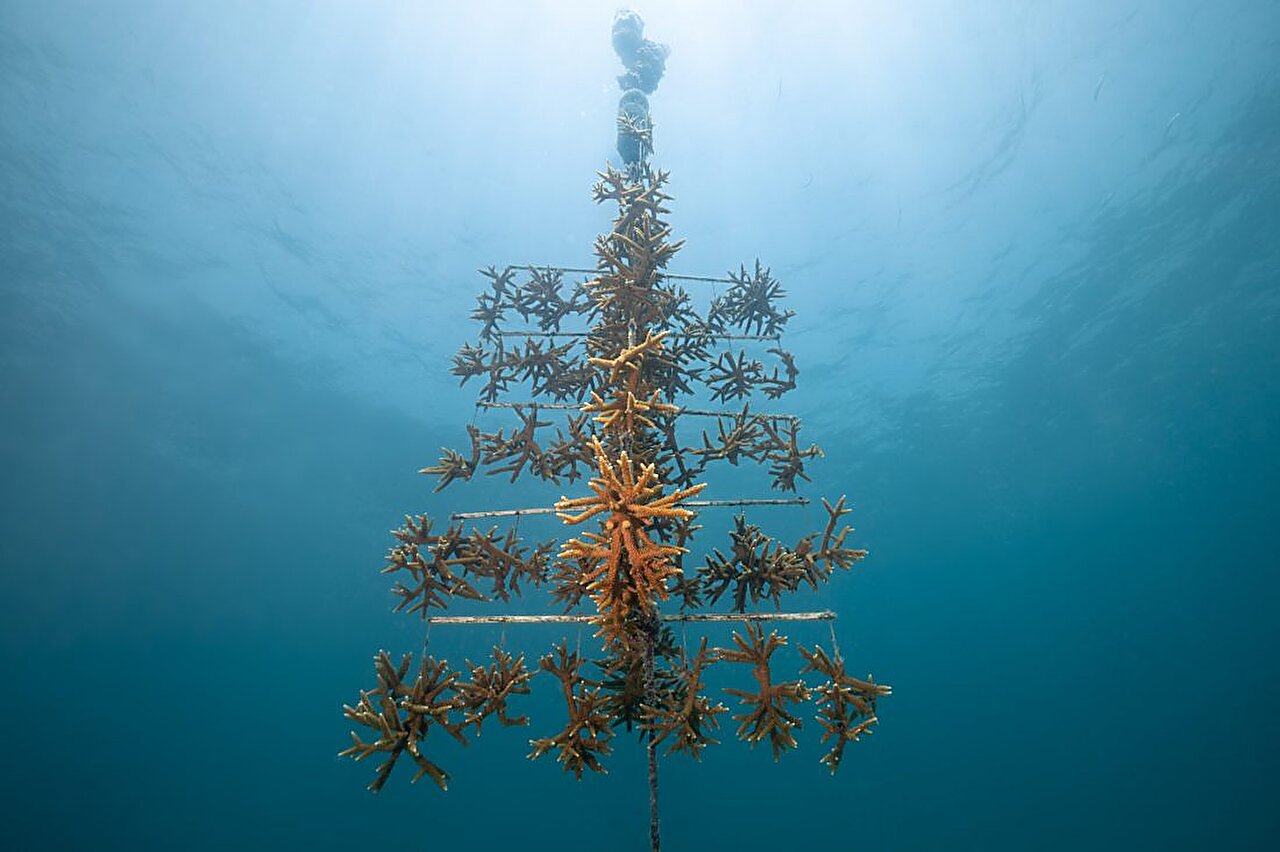Witnessing disease outbreaks that have nearly annihilated staghorn coral colonies in the Caribbean, Northeastern scientist Steven Vollmer wondered what lessons a few lone survivors might offer for the future of coral reefs. Would it be possible to identify disease-resistant corals by their genetic makeup? And if the hardier types were specially selected for underwater coral nurseries, would the result be healthier reef systems?
Vollmer’s groundbreaking research provides an affirmative answer to the first question. His report in the Sept. 29 issue of Science identifies dozens of staghorn genotypes from Florida and Panama that are resistant and highly resistant to disease. This discovery has the potential to revolutionize coral farming and restoration efforts. Currently, coral farmers are growing hundreds of genotypes without knowing which ones are disease-resistant. But with Vollmer’s research, they can now identify disease-resistant corals with high accuracy using as few as 10 gene variants.
The devastating impact of disease on Caribbean corals cannot be underestimated. While rising sea temperatures and thermal bleaching have received significant attention, a stealthy bacterial infection called white band disease has silently spread across the Caribbean, nearly wiping out staghorn and elkhorn corals. These two iconic corals, once dominant in the Caribbean, have been decimated by the disease.
The crisis led to the growth of coral farming, particularly off the coast of Florida, where fragments of coral branches are grown on frames resembling underwater trees. However, Vollmer was surprised to find that the disease resistance of the surviving staghorn coral populations had not been thoroughly investigated. To address this gap, Vollmer conducted research using staghorn corals from Florida and Panama.
The research involved subjecting the corals to white band disease and identifying the genotypes that displayed disease resistance. In the end, Vollmer and his team identified 33 disease-resistant genotypes, with 19 from Florida and 14 from Panama. Additionally, they found 15 highly disease-resistant genotypes, with nine from Florida and six from Panama. This information is crucial for coral farmers who are working to rebuild devastated reefs in Florida. By knowing which corals are disease-resistant, they can make informed decisions about which genotypes to stock in nursery farms.
While much is still unknown about white band disease, Vollmer’s research provides hope for the future of coral reefs. By identifying disease-resistant genotypes, scientists can work towards developing strategies to help corals survive climate change and other stressors. This is crucial for the preservation of coral reefs, which are not only beautiful ecosystems but also provide essential services such as wave buffering, supporting fish populations, and attracting tourists.
In conclusion, Vollmer’s research offers a glimmer of hope for the future of coral reefs. By understanding the genetic makeup of disease-resistant corals, we can take steps towards building healthier reef systems and ensuring the survival of these vital ecosystems.








